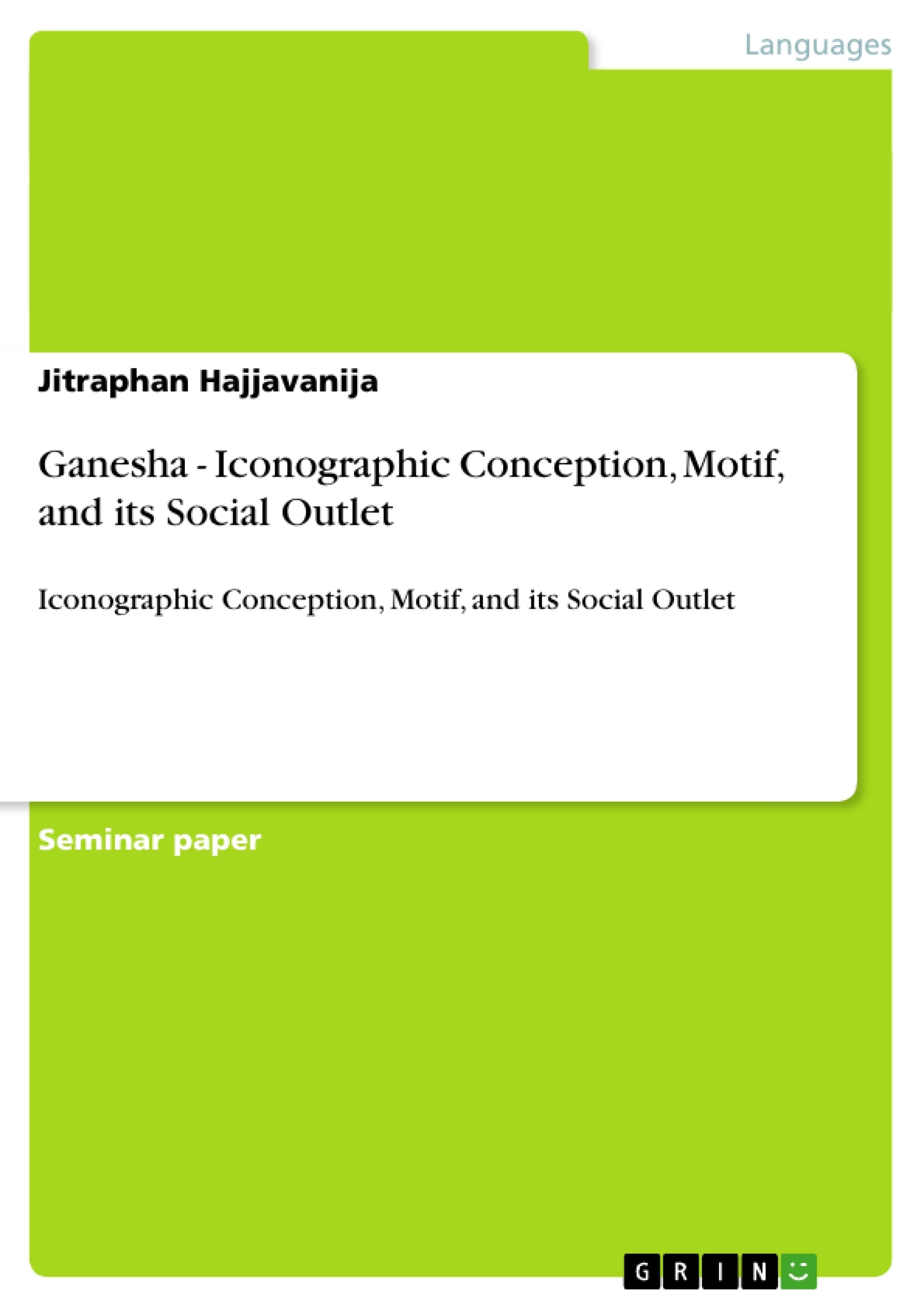In this essay, I attempt to write about the importance and remarkable motif appearing in Gaṇeśa’s myth and his Iconographic conception. Besides I try to give its interpretation and its social outlet function by using the same method which is from the book ทฤษฏีคติชนวิทยา:วิธีวิทยาในการวิเคราะหตํานานและนิทานพื้นบาน1 by ศิราพร ณ ถลาง2 like I used In Thailand to study Folk literature. But the most importantly, one should consider that the interpretations in this essay, some of them was collected from the book concerning to Gaṇeśa’s myth, some are my own interpretation and there is no right or wrong in the interpretation so “Let the myth speaks by itself” .
Inhaltsverzeichnis (Table of Contents)
- 1. Introduction
- 1.1 Lord of Obstacle and Beginning
- 1.2 Gaṇeśa: An elephant-headed god
- 2. Gaṇeśa's motifs
- 2.1 Motif of an Elephant
Zielsetzung und Themenschwerpunkte (Objectives and Key Themes)
This essay aims to explore the significance of Gaṇeśa's iconographic conception and motif within his mythology, and to analyze its social function. The methodology employed is based on folklore theory, drawing upon existing scholarship on Gaṇeśa and offering original interpretations. The essay acknowledges that interpretations of mythology are subjective and encourages a nuanced understanding of the subject matter.
- The importance and widespread worship of Gaṇeśa in India and beyond.
- The analysis of Gaṇeśa's iconography, particularly his elephant head.
- The exploration of key motifs in Gaṇeśa's myths, such as his birth, his elephant head, and his single tusk.
- The use of folklore methodology to analyze and classify Gaṇeśa's myths.
- The comparison of Gaṇeśa's cult in India with its manifestations in other parts of Asia.
Zusammenfassung der Kapitel (Chapter Summaries)
Chapter 1: Introduction provides an overview of the essay's objective and methodology, highlighting the significance of Gaṇeśa and the approach taken to interpret his myths. It establishes Gaṇeśa's prominent role in Hindu pantheon and discusses the geographical spread of his cult.
Chapter 1.1: Lord of Obstacle and Beginning details Gaṇeśa's prominent role as the remover of obstacles and bestower of beginnings, explaining his widespread worship and devotional practices. It emphasizes his importance in Hindu rituals and his role as a path-opener to other deities.
Chapter 1.2: Gaṇeśa: An elephant-headed god explores the mythology surrounding Gaṇeśa's elephant head, discussing various versions of his birth story and his relationship with his parents, Śiva and Pārvatī, and his brother Skanda. It also touches upon the differing representations of Gaṇeśa across various regions.
Chapter 2: Gaṇeśa's motifs introduces the concept of motifs in folklore and applies it to the analysis of Gaṇeśa's myths. It discusses the importance of identifying and classifying the motifs to understand the underlying themes and narratives.
Chapter 2.1: Motif of an Elephant delves specifically into the significance of Gaṇeśa's elephant head, examining potential explanations for this unique feature and exploring its connection to ancient cultures and concepts of sacred elephants.
Schlüsselwörter (Keywords)
Gaṇeśa, Hindu mythology, iconography, motif, elephant head, folklore methodology, myth analysis, cultural diffusion, religious symbolism, South and Southeast Asian religious practices.
- Quote paper
- Jitraphan Hajjavanija (Author), 2007, Ganesha - Iconographic Conception, Motif, and its Social Outlet, Munich, GRIN Verlag, https://www.grin.com/document/119460



